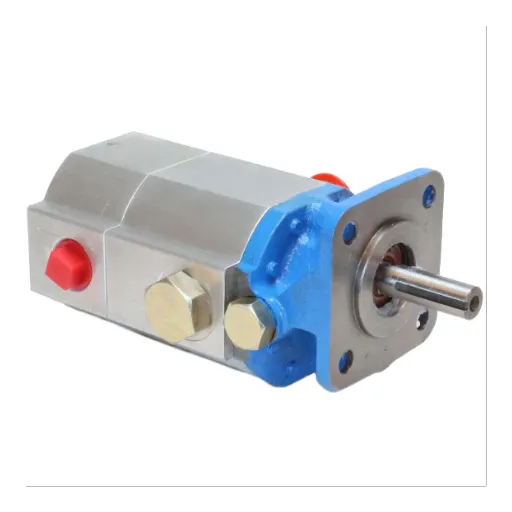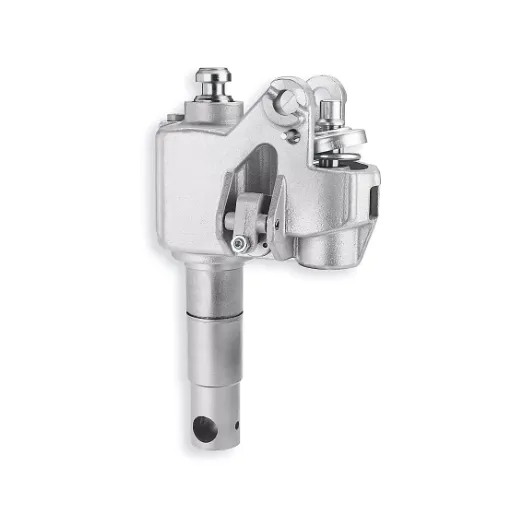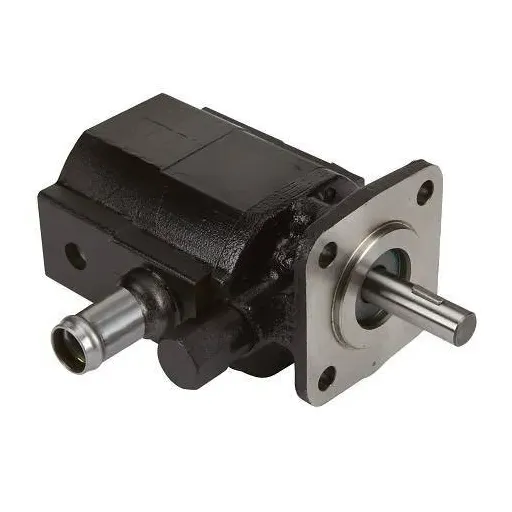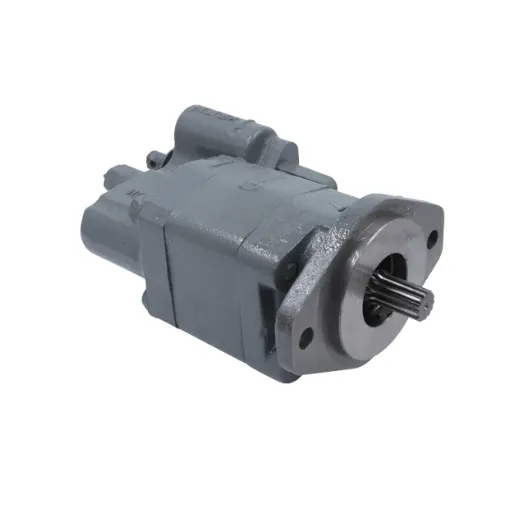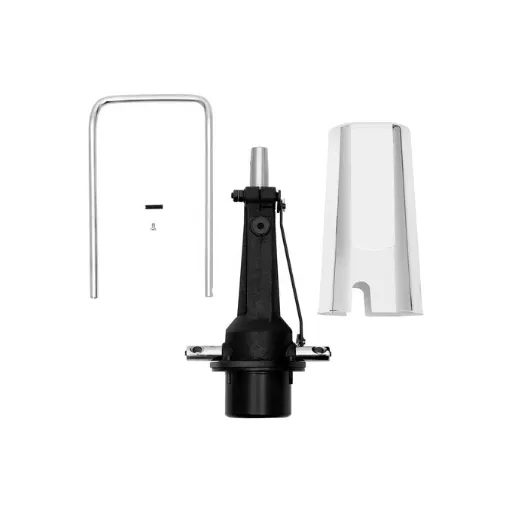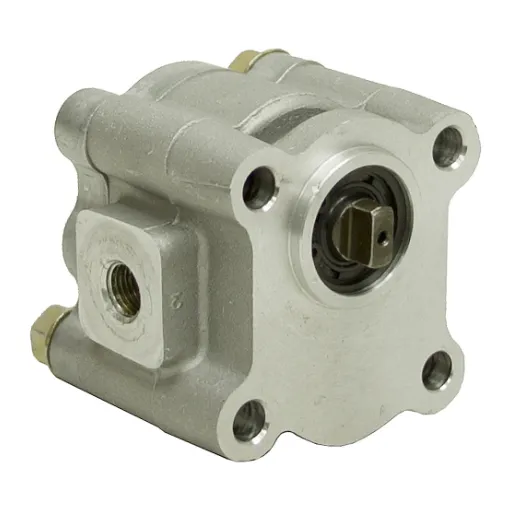In the case of splitting logs in an efficient and effective manner, the basis of proper hydraulic pump selection for the log splitter will be the decisive factor. The hydraulic pump is the brain of the whole process, at the same time providing the necessary pressure and flow to deal with the most stubborn hardwoods. But since the range of choices is so wide, picking the appropriate size may end up being quite a task. What are the signs that the selected pump will be appropriate for your case? No matter if you’re a pro or a DIY-er, this piece will cover all the basics of hydraulic pump sizing and then some, positioning you to make a choice that gives you the fastest performance possible while saving your time and effort. Don’t go away as we will take you through the important factors to consider and turn a difficult choice into simple and executable steps.
Understanding Log Splitters and Hydraulic Pumps
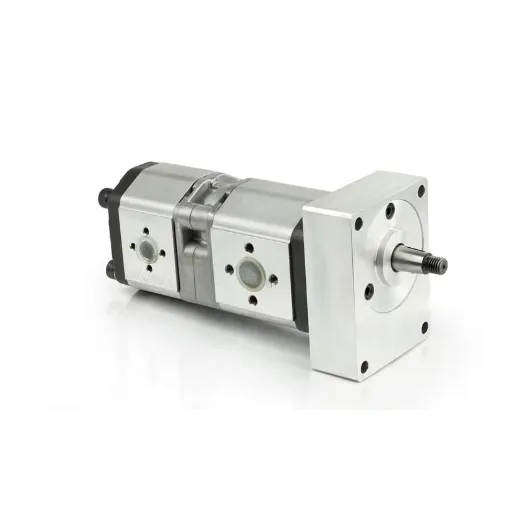
1What is a Log Splitter?
A log splitter is a gadget that is meant to turn big logs into small ones and is usually used as firewood. A log splitter, which can be either hydraulic or mechanical, exerts a mighty force on a log that is laid either horizontally or vertically and splits it in no time by pushing it against the wedge or a blade. This machine does not require the process of chopping by hand to be done, which can be very exhausting and take a lot of time.
There are different kinds of log splitters, such as manual, electric, gas-powered, and hydraulic models, each one serving a particular purpose and user requirements. Manual log splitters are simple and inexpensive but require physical strength, making them suitable for infrequent light usage. Electric log splitters are quiet in operation and the power they require makes them ideal for smaller jobs, while gas-powered types offer the advantage of mobility and greater power, thus suiting them for large or distant splitting tasks. Hydraulic log splitters, however, are very powerful and can conquer difficult or twisted logs; hence, they are the choice for heavy-duty work.
Key Benefit: Besides the time saving, the main advantage of a log splitter is the lower physical strain on the user. If you are a homeowner using firewood for heating or a camper preparing wood for the fire, a log splitter will give you exactly what you need in terms of consistent and clean cuts, all with very little input. Log splitters of any type, electric, gas, or hydraulic, are made safe and reliable solutions to what would otherwise be a physically strenuous chore thus becoming a necessity for many.
2How Hydraulic Pumps Function in Log Splitters
The hydraulic pumps in log splitters are the main devices to create the force necessary for the wood splitting process to be efficient. It is by pressurizing the hydraulic fluid that these pumps transform the motor’s mechanical energy into hydraulic energy. The hydraulic fluid under pressure is then sent to the hydraulic cylinder where it pushes the splitting wedge’s motion to slice the log.
It is the engine or motor that first powers the pump in this hydraulic log splitter device, which in turn draws and compresses hydraulic fluid from the reservoir. The fluid then passes through a system of valves and hoses that control the flow and pressure. The hydraulic cylinder, which is fed by the pressurized fluid, is pushing the ram or wedge with constant, very strong force which makes it possible to split even large or thick logs without any effort.
Why It Matters: What makes the hydraulic pumps in log splitters so effective is their capability to increase the energy while keeping the size small. This system gives an operator very precise control over the splitting process, thus making it efficient and safe at the same time. Furthermore, the hydraulic systems allow for much less physical input from the user therefore log splitters become an unavoidable tool in case of handling large amounts of firewood with minimal strain.
3Key Components of a Log Splitter
All components are essential parts of a log splitter which by their cooperation create an efficiency and an effectiveness of the whole log-splitting process. The basic parts are the hydraulic pump, a cylinder, a control valve, a wedge, and the motor or the engine.
| Component | Function & Description |
|---|---|
| Hydraulic Pump | The hydraulic pump is the main source of the pressure that is necessary for the splitting of logs. Its main function is to convert the mechanical energy of the engine into hydraulic energy, which is then used to operate the cylinder. This component is of utmost importance to the system since it is the provider of the force that pushes the log into the wedge. |
| Cylinder | The hydraulic cylinder is the part of the log splitter that is extending and retracting to apply pressure on the log. The powerhouse is the hydraulic fluid under pressure and it is by this that the log gets pushed through the wedge to get split. |
| Control Valve | The control valve gives the operator the ability to dictate the path and amount of hydraulic fluid. The cylinder operation is controlled in terms of accuracy and safety through this method ensuring that splitting can take place without any danger. |
| Wedge | The wedge is the cutting instrument of the splitter. Usually, it is made of toughened steel and is placed in a fixed position to cut logs during pressure application. Some designs have adjustable or multi-splitting pattern wedges. |
| Motor or Engine | The motor, which can either be gas-fired or electric, is the source of the mechanical energy which is required to operate the hydraulic pump. Usually, the motor type is determined by the workload and the power supply availability. |
💡 Important Note: Each of the parts performs a significant function in the working of the log splitter. They all together make sure that the machine operates with power, precision, and great efficiency thus making log splitting a much easier and safer task.
Determining the Right Hydraulic Pump Size
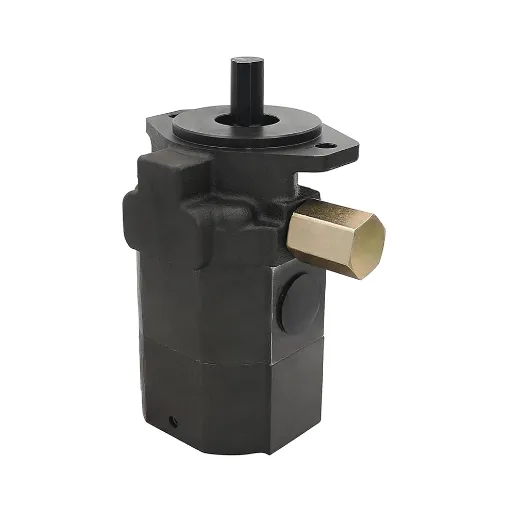
Factors Influencing Pump Size
The hydraulic pump’s ampacity for a log splitter is affected by several crucial factors, each of which provides the intended workload with the best performance and efficiency:
1. Splitting Force Requirements
The hydraulic pump size is determined directly by the splitting force. A heavy-duty hydraulic system may be required for larger and tougher logs, thus a bigger pump will be required to create enough pressure.
2. Desired Cycle Time
Cycle time, or the time taken by the splitter to finish a complete splitting cycle, is a major factor in pump selection. Usually, quicker cycle times imply that the pumps with higher flow rates are needed to quickly and efficiently provide the requisite volume of the hydraulic fluid.
3. Engine or Motor Capacity
The power output of the engine or motor must be equal to or greater than that required by the hydraulic pump. A pump that is too large in size compared to that of the motor may cause inefficiencies as well as wear of the motor in the long run.
4. System Pressure Rating
The hydraulic pump’s compatibility is determined by the hydraulic system’s pressure rating, which is often expressed in PSI (pounds per square inch). If the pump is chosen according to the system’s maximum pressure, safe and effective operation will be guaranteed.
5. Log Splitter Design and Usage
The log splitter’s design and intended usage, whether it is for residential or heavy-duty industrial tasks, determine the size and specifications of the hydraulic pump needed to cope with the workload.
⚠️ Critical Consideration: These factors must be weighed against each other when selecting a hydraulic pump to ensure that the log splitter continues to be efficient and reliable throughout the different working conditions. Resource consumption will also be minimized and the equipment’s lifespan extended by carefully matching the pump size to the system’s requirements.
Common Mistakes in Pump Size Selection
❌ Mistake #1: Choosing the Wrong Size
The most common improper choice of pump for a hydraulic log splitter is that of a too small or too big one for the workload it is going to be used. An undersized pump might not be able to produce the necessary power, thus making the operation inefficient and putting more strain on the pump and equipment as a whole. On the other hand, a pump of too large capacity will consume more power than necessary, make the system wear quicker, and thus, will be an expensive operation.
❌ Mistake #2: Ignoring Flow Rate and Pressure Requirements
Another frequent blunder is the failure to take into consideration the hydraulic system’s flow rate and pressure requirements. Flow rate mismatches can cause overheating or slow operation, while low pressure can prevent the splitter from working on tougher logs. Moreover, neglecting to examine the pump’s compatibility with the hydraulic liquid’s type and temperature range may result in early system failure or diminished output.
❌ Mistake #3: Overlooking Environmental Conditions
Also, the environmental and usage conditions being ignored can lead to the pump not performing at its best. For example, a pump that is made for infrequent light-duty use may end up breaking down in a heavy-duty industrial application before its time. Assessing the factors thoroughly and seeking the help of professionals or following the manufacturer’s instructions is very important to avoid such mistakes.
Step-by-Step Guide to Selecting a Hydraulic Pump
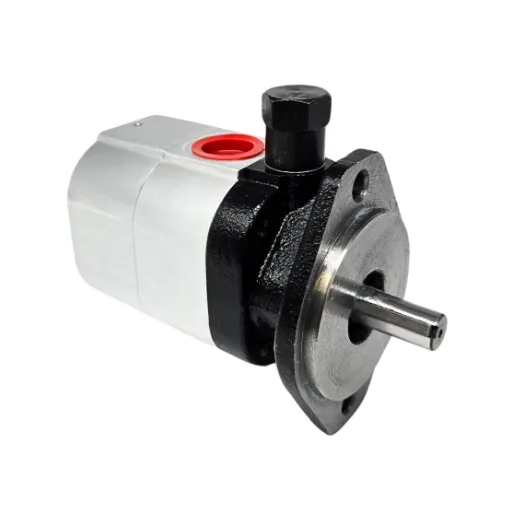
Choosing Between PTO and Electric Pumps
When you are in the position of choosing between PTO (Power Take-Off) pumps and electric pumps for your hydraulic system, it is a very prudent approach to thoroughly examine their distinct advantages and disadvantages and how they fit your requirements. The engine of the tractor powers the PTO pumps which are consequently the most suitable for extremely heavy-duty applications like farming and forestry. They, in turn, have such high power output, are not expensive given that you own a tractor that can work with the pump, and can work for long periods without problems. Again, since they belong to tractors, they might not be suitable for bare or very remote areas where power is indispensable.
Conversely, electric pumps are extremely adaptable and can easily be moved around since they are not dependent on any other piece of equipment. This is the case especially in places where these characteristics – mobility and easy setting up – are the most important like workshops or small-scale projects. One of the main advantages of electric pumps over PTO units lies in their operational noise level, energy consumption, and emitted pollutants. These, however, are quite difficult to deal with because electric pumps usually do not have the same power output as the PTO pumps for extensive or heavy-duty tasks and at the same time they need a reliable power source.
| Feature | PTO Pumps | Electric Pumps |
|---|---|---|
| Power Source | Tractor Engine | Electrical Power |
| Best For | Heavy-duty farming/forestry | Workshops/small projects |
| Mobility | Limited (requires tractor) | High (standalone) |
| Power Output | Very High | Moderate |
| Noise Level | Higher | Lower |
| Cost Efficiency | High (if tractor owned) | Variable |
📋 Decision Guide: In conclusion, the factors such as the equipment you have, the type of your operational requirements, and the environmental conditions under which the pump is used will determine which type of pump to go for. Carefully considering these factors will enable you to pinpoint the pump type that not only meets your productivity goals but also your functional demands.
Selecting the Appropriate Horsepower
Determining your pump’s correct horsepower is very important if you want to have reliable and efficient performance. Pump horsepower is the work capacity of an engine and it directly correlates with the pump’s capability of moving liquids. To choose the right horsepower, you need to be aware of the characteristics of the liquid being pumped, the vertical height (head pressure) that the liquid has to be moved, and the required flow rate for your operations, among other things. Pumps with low horsepower may become overworked and eventually fail mechanically during their operation, while overly strong pumps can consume power and drive up costs.
🎯 Key Considerations for Horsepower Selection:
- Liquid Density and Viscosity: Thick or heavy liquids need more power to be pumped effectively compared to water and less viscous substances such as juices.
- System Head Analysis: Analyze the system head that encompasses both the suction lift and discharge head. The more the total dynamic head, the higher will be the horsepower capacity required per pump to ensure that the flow performance stays optimum.
- Manufacturer Specifications: Try to get pump specifications from manufacturers for an easier selection of pumps, as they are more likely to include flow rate curves and horsepowers to be recommended for different conditions.
If you apply these technical insights together with calculating your system’s demand accurately, you will steer clear of improperly working or overly strong machines. Owning a pump with the perfect horsepower for your particular application not only increases energy efficiency but also the pump’s lifetime and reliability. Making sure that this compatibility exists is crucial for maintaining productivity over a long haul with fewer maintenance expenses.
Log Splitter Applications: Residential vs. Commercial
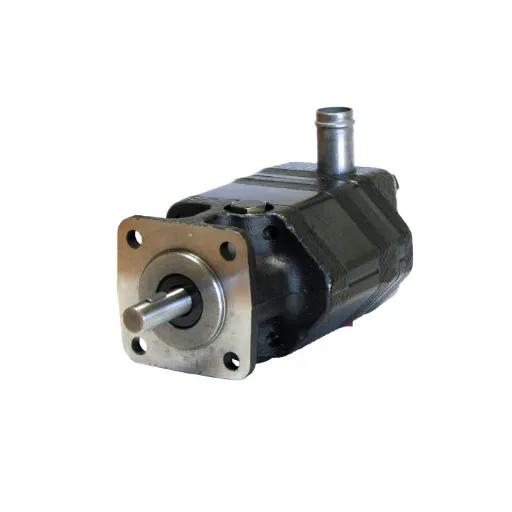
Choosing a Pump for Residential Use
In the process of picking a hydraulic pump for home use, it is very important to take into consideration the factors of efficiency, longevity, and the capacity of performing the task with the least power. Generally, residential wood splitters demand less powerful and lesser flow rate pumps than their commercial counterparts. A two-stage hydraulic pump is the most opted type of pump for residential applications because it can manage the speed as well as the power needed for the splitting of wood at home very evently.
🏠 Residential Pump Specifications:
- Flow Rate: 11 to 16 gallons per minute (GPM)
- Pressure Rating: Approximately 3,000 PSI
- Pump Type: Two-stage hydraulic pump (most popular)
- Design Priority: Compact and lightweight for easy movement and storage
Such specifications are a combination of the pump’s energy efficiency and functionality, thus ensuring the pump’s effective operation without causing the system to be overworked. To small and light-weight pump designs are the best for the residential users as they allow easy movement and storage of the pump.
Moreover, that business of spending money on high-quality parts along with regular maintenance will last your pump long and spare unwanted downtime. Different log-splitting situations would justify different pumps, but the end result would be that the homeowners can rely on performance, and it would also be energy-efficient.
Commercial Log Splitters: What to Consider
In the process of picking a log splitter for commercial purpose, it is very important to consider the amount of power and capacity that will be necessary for heavy-duty operations. Log splitters of commercial-grade are made to handle splitting of wood in large amounts easily, and they usually have bigger engines, higher tonnage ratings, and strong hydraulic systems. The tonnage requirement varies with the type of wood—hardwoods like oak or hickory need more force than softer woods like pine. On top of that, make sure the splitter can deal with the length and diameter of the logs you want to process, as an oversized log can either slow down the operation or even damage the equipment.
🏭 Commercial Considerations:
Splitter Types:
- Manual splitters
- Gas-powered splitters (best for outdoors and heavy-duty tasks)
- Electric splitters (quiet operation for indoor/small commercial use)
- Skid steer-mounted splitters
Mobility Features:
For businesses that need mobility, look for splitters with trailer hitches or purchase towable models that let you move between job sites. You should also ensure that the splitter comes with operating controls that are easy to use and has safety features like guards or automatic shutdown systems for the majority of risks to be minimized during operation.
Durability and maintenance should also be taken into account and looked through very thoroughly. Go for log splitters which are made out of high-quality steel and have wear parts that can be replaced in order to withstand the rigorous daily use. A lot of the log splitters that are meant for commercial use have features like log cradles, four-way wedges, or adjustable settings for increased efficiency that are very much a part of their advanced technology. One of the very important things to mention is that the routine maintenance such as changing of filters, checking of hydraulic oil and timely part replacements, is very essential for the longevity of the equipment. Having invested in trustworthy brands and warranties will not only give you performance enhancement but will also cut down your potential downtime, thus keeping your business running like a smooth machine.
Maintenance and Performance Optimization
Regular Maintenance Tips for Hydraulic Pumps
The proper upkeep of hydraulic pumps is crucial for their long life, good performance, and safety in the whole operation. Here are some important hints that can keep the pumps running at their best:
💧 Monitor Fluid Levels and Quality
Keep an eye on the hydraulic fluid and check it regularly for contamination, degradation, or low levels. If the fluid is contaminated or degraded, it will reduce the efficiency of the pump and might also lead to wear of its internal parts. Always change the hydraulic fluid according to the intervals recommended by the manufacturer.
🔧 Inspect and Replace Filters
Filters block debris as well as contaminants and thus prevent them from entering the pump and other hydraulic parts. It is essential to inspect the filters and to replace them when clogged or worn out in order to keep the hydraulic system clean.
🔍 Check for Leakages
Seek visible signs of leakage in the hoses, seals, and fittings. The problem of leaks if any, should be dealt with at once to incurring further damage to the system and the associated downtime.
🌡️ Maintain Proper Operating Temperatures
The hydraulic systems need stable operating temperatures to work efficiently. High temperatures can spoil hydraulic fluid and lead to the breakdown of the internal parts. The cooling systems like the fans or the heat exchangers should be in perfect working condition.
⚙️ Inspect for Wear and Tear
Wear and tear are the inevitable consequences in hydraulic pumps. The gears, seals, and bearings should be regularly checked and if found damaged or excessively worn, they should be replaced.
📅 Perform Scheduled Maintenance Checks
Follow the maintenance schedule set by the equipment manufacturer. A properly structured maintenance routine not only identifies the potential issues early but also prevents costly breakdowns.
✨ Pro Tip: By adopting these maintenance practices the hydraulic pumps will be more reliable and efficient thus resulting in less unplanned downtime and better overall performance. The use of advanced diagnostic tools that can detect hidden issues proactively is highly recommended in order to keep your system operating at its best.
Optimizing Performance with the Right Hose and Valves
The right hoses and valves are crucial to optimal performance in hydraulic systems. First of all, your choice of hose is determined by the operating pressure and fluid compatibility that your system requires. Furthermore, using substandard or incompatible hoses can cause quite a few problems such as leaks, inefficiencies, or even complete system failure. Whenever I select hoses, I always take manufacturer specifications and industry standards into consideration and ensure that the hoses will support the required pressure range and fluid type.
Just like valves, they also play a significant role in maintaining the stability of the system and providing a precise operation. Selecting high-quality valves with proper flow control characteristics will significantly affect the performance of the system. I pay attention to valves that are made for the exact flow rates and pressure specifications of the system, because this guarantees smooth operation and reliability for an extended period. Regular inspection and cleaning of valves are needed to help maintain their lifespan and avoid malfunctions.
🎯 Bottom Line: By taking the quality and compatibility of both hoses and valves into consideration, I can confidently enhance system efficiency and life cycle. These parts serve as crucial connections in hydraulic systems, and keeping them in good condition and properly selected promotes better performance, reduced downtime, and long-term customer satisfaction with the overall functionality of the system.
Common Issues and Troubleshooting Tips
Hydraulic system operation comes with different common issues whose effects are often felt in the performance aspect. One of those problems is leaks that occur mainly in the hoses or valves and result mainly from the use of hydraulic fluid, improper installation, and incompatible materials among others. With this, it is advisable to do inspections of hoses and valves on a regular basis and check for visible cracks, bulges, and loose fittings, and replace any damaged components promptly to prevent further damage. Another matter that people encounter is overheating which can be caused by insufficient fluid or by the wrong hydraulic fluid type. Regularly checking fluid levels and ensuring the fluid is compatible with the system are two ways to help prevent this issue.
Fluid contamination is frequent and it is one of the causes that lead to the reduction of system efficiency and failures. However, the problem can be dealt with by keeping up with the filtration schedule and filter changes prescribed in the process to maintain the system cleanliness. Also, trapped air might lead to the abnormal working of the system or noise. Proper bleeding of the system to let out the air will solve the problem.
⚡ Critical Reminder: Infrequent maintenance is one of the major causes of equipment downtime and reduced lifespan. Set up a routine that emphasizes preventive maintenance such as routine cleaning, lubrication, and component inspection to cut down on unplanned downtime and ensure long-term reliability. If you take these proactive steps and deal with these issues as they arise, you will not only improve the performance of the system but its operational life as well.
Frequently Asked Questions (FAQ)
❓ What size hydraulic pump is needed for a log splitter?
Log splitter hydraulic pump size is primarily dictated by the user and the splitter specifications. Usually, a two-stage pump is recommended, with the most common sizes being in the range of 11 gpm to 22 gpm. Generally, for residential log splitters, a pump of 16 gpm is a good compromise between speed and force.
❓ How does the hydraulic pressure affect the performance of a log splitter?
Usually, log splitters operate with a hydraulic pressure of around 3000 psi, which is essential for wood splitting. High pressure would mean that the wood gets split rather quickly, while low pressure would slow down the process very much. Therefore, the hydraulic pressure has to be adjusted according to the pump specifications to achieve the best performance.
❓ What is the difference between a two-stage pump and a single-stage pump?
A two-stage pump is designed to operate at two separate flow rates, thus permitting quick splitting initially and then switching to low flow for maximum pressure. The two-stage design gives quite an advantage in speed as well as efficiency when compared to a single-stage pump.
❓ What are the benefits of using a high gpm hydraulic pump for log splitters?
High gpm hydraulic pump like 16 gpm or 22 gpm can be the reason for logging splitting speed going to new heights. This means extensive logs processed in a very short period, which is very conducive for an operation that often involves splitting big quantities of wood.
❓ How do I adjust the hydraulic pump for a log splitter?
Setting the hydraulic pump for a log splitter means adjusting the flow rate and pressure to the specific requirements of your splitting tasks. For instance, by changing the pump’s port connections, using the auto-return feature, etc. one can optimize performance based on the size and hardness of the logs being split.
❓ Can I use a lower flow hydraulic pump for my log splitter?
Yes, you can use a 4 gpm flow hydraulic pump that is low flow type but it might not perform well for larger or harder logs splitting. It is always recommended to have the flow rates above 11 gpm to ensure that wood splitting is done efficiently with no excessive strain on the machine.
❓ What log splitter parts should I consider when selecting a hydraulic pump?
When choosing a hydraulic pump for the log splitter, make sure that it is compatible with the existing log splitter parts such as the cylinder size and the hydraulic hoses. The pump should match the specifications of the hydraulic system to deliver the best performance and safety.
❓ How does piston size influence the choice of hydraulic pump?
The size of a piston in a splitter has a direct bearing on the hydraulic pressure generated during log splitting. A more powerful pump is needed for a larger piston to produce pressure that is sufficient for splitting. Correct combination of piston size and pump will ensure good performance.
❓ Is it necessary to modify my log splitter to accommodate a new hydraulic pump?
It may require some adjustments depending on how big and what characteristics the new hydraulic pump has. This might mean changing hoses, adjusting the mounting brackets or even upgrading other components to cope with the increased flow rate and pressure. It is always better to be safe than sorry, so ensure compatibility to keep operation safe and effective.
Ready to Choose the Perfect Hydraulic Pump?
Selecting the right hydraulic pump for your log splitter doesn’t have to be complicated. By understanding the key factors—splitting force requirements, cycle time, engine capacity, system pressure, and your specific usage needs—you can make an informed decision that will serve you well for years to come. Whether you’re a homeowner looking for a reliable residential pump or a professional requiring heavy-duty commercial equipment, the right pump will maximize efficiency, minimize downtime, and ensure safe operation.



